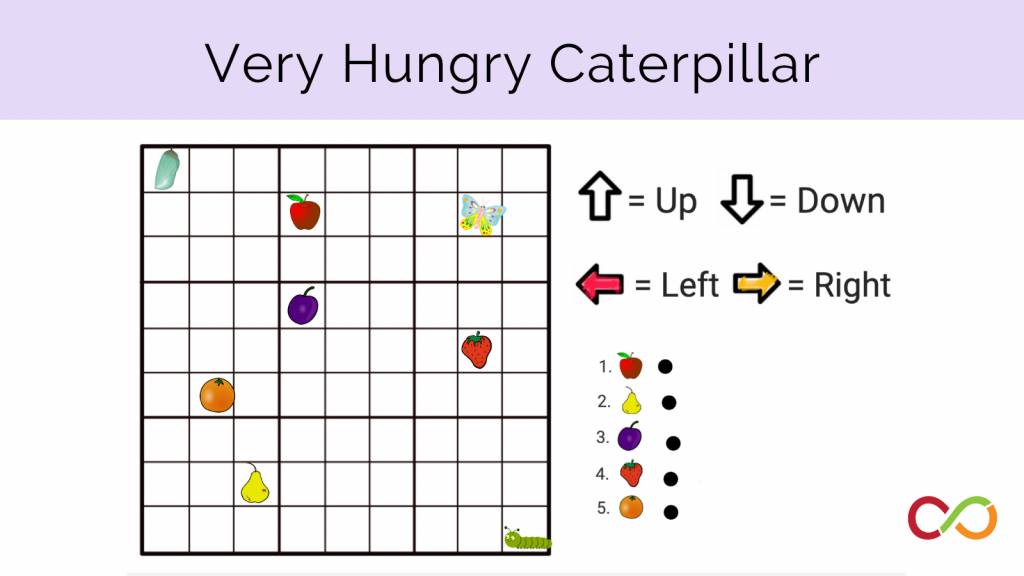The Animal Grid Game
Early Years/Primary (Age 3 – 9)
Curriculum Goal
Kindergarten: Demonstrating Literacy and Mathematics Behaviour
- Describe, sort, classify, build, and compare two-dimensional shapes and three-dimensional figures, and describe the location and movement of objects through investigation (#17).
Primary: Geometry and Spatial Sense
- Solve problems and create computational representations of mathematical situations by writing and executing code, including code that involves sequential events.
Primary: Patterning and Algebra
- Identify and describe the locations and movements of shapes and objects.
Context
- Students will be sitting on the carpet in a circle.
Materials
- Animal grid (Appendix A): 1 large laminated grid for teacher, 1 small grid placed in plastic sleeve per student
- Clipboards
- Markers
- Tissues to erase routes
Lesson
- Introduce students to the grid, highlighting the number of squares there are in each column and row.
- Explain that students will be planning routes for a zookeeper to get from the animal house (top left square marked with an X) to an animal.
- Introduce rules: paths cannot go on a diagonal or through a square that has another animal on it.
- Complete a demo of a 2-step pathway (e.g. to feed the rhinoceros, go 4 squares to the right and 4 squares down). Be sure to put a dot on the square where the path changes direction.
- Introduce the code as a method to write this pathway, using arrows pointing in the direction of movement with the number of spaces moved beside it (e.g. → 4 and ↓ 4 to the rhinoceros).
- For more practice, have students plan the route to another animal and/or write a 2-step code (→ 7 and ↓ 1) but do not draw a pathway. Have students visualize what animal the zookeeper is going to feed.
- Give students their own grid on a clipboard and repeat the activity individually.
- Encourage students to make multiple routes to the same animal.
Look Fors
- Do children use directional language (e.g. right, left, up, down)?
- Can children visualize the code?
- How do children communicate the code? Through symbols? Through language? Both?
Extensions
- As children become proficient, introduce 3-step codes and encourage children to create pathways with more steps.
Share this lesson
Share on facebook
Share on twitter
Share on email

